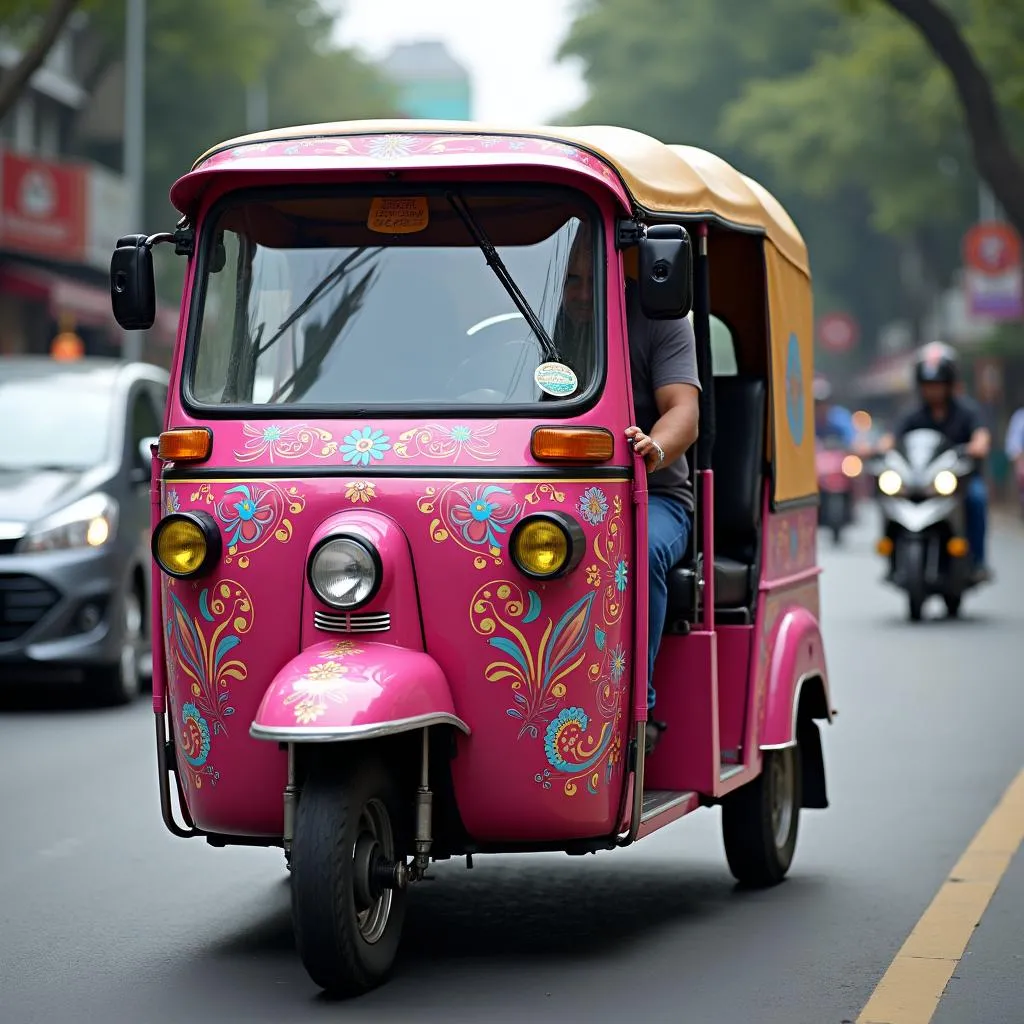Picture this: You’re cruising down a bustling street in Bangkok, the aroma of street food filling the air, when a brightly colored, three-wheeled vehicle zips past. That, my friend, is the iconic tuk-tuk, a symbol of Southeast Asian transportation and a unique cultural experience all rolled into one. But what exactly is a tuk-tuk car, and what makes it so special? Buckle up as we explore the world of these quirky vehicles!
Decoding the Tuk-Tuk: More Than Just a Vehicle
The term “tuk-tuk car” can be a little misleading. You see, while it’s often referred to as a car, the tuk-tuk isn’t technically classified as one. It falls under the category of auto-rickshaws, a type of three-wheeled motorized vehicle used as taxis in many parts of the world.
“From an automotive technician’s perspective, a tuk-tuk is a fascinating blend of simplicity and functionality,” says Michael Schmidt, a seasoned mechanic with over 20 years of experience working on various vehicles, including tuk-tuks. “They’re powered by small engines, usually gasoline or increasingly, electric motors, and their mechanics are relatively straightforward, making them easy to maintain and repair.”
But beyond the technicalities, the tuk-tuk holds a special place in the hearts of locals and tourists alike. It represents affordability, convenience, and a touch of adventure, all wrapped up in a brightly painted package.
 Tuk-tuk navigating through busy Bangkok streets
Tuk-tuk navigating through busy Bangkok streets
Answering the Call of the Open Road (or Busy Street): The Many Faces of Tuk-Tuks
While the image of a tuk-tuk zipping through Bangkok’s streets might be the most prevalent, these versatile vehicles come in various shapes and sizes, each tailored to its specific location and purpose.
In India, for example, you’ll find auto-rickshaws, often referred to as “autos,” which share a similar structure with tuk-tuks. These are a common mode of transport, especially in crowded cities, providing an affordable and efficient way to navigate the chaotic traffic.
Head over to Peru, and you’ll encounter “mototaxis,” another variation of the tuk-tuk theme. These are typically motorcycles with a passenger cabin attached and are a popular mode of transport, particularly in smaller towns and villages.
 A row of brightly colored tuk-tuks ready for passengers
A row of brightly colored tuk-tuks ready for passengers
Beyond Transportation: The Cultural Impact of Tuk-Tuks
The appeal of the tuk-tuk extends beyond its practical uses. It has become an icon, a symbol of the countries where it’s commonly found. Tourists often seek out tuk-tuk rides for the sheer novelty of the experience, the wind in their hair as they navigate crowded streets and soak in the sights and sounds of a new city.
“In my book, ‘The Soul of Southeast Asia,’ I dedicate an entire chapter to the cultural significance of the tuk-tuk,” explains anthropologist Dr. Emily Carter. “It’s not just a mode of transport; it’s a social space, a place where people from all walks of life come together, share stories, and experience the city’s pulse.”
Gearing Up for the Future: The Evolving Tuk-Tuk
Just like the automotive industry as a whole, the world of tuk-tuks is evolving. Electric tuk-tuks are gaining traction, particularly in urban areas, as a sustainable and eco-friendly alternative to their gas-powered counterparts. This shift towards electric mobility is driven by growing concerns about air pollution and the need for greener transportation solutions.
Have More Questions About Tuk-Tuks or Automotive Diagnostics?
We’d love to hear from you! Connect with us on WhatsApp at +84767531508. Our team of auto experts is available 24/7 to answer your questions, whether you’re curious about the inner workings of a tuk-tuk engine or need help with your car’s diagnostic tool.
Keep the Engine Running: Explore More Automotive Insights
Interested in learning more about the world of cars, from the familiar to the unconventional? Check out these other informative articles on our website:
- Understanding ECU Diagnostics: A Comprehensive Guide
- The Rise of Electric Vehicles in Southeast Asia
- Maintaining Your Car in a Tropical Climate
We’re passionate about all things automotive and love sharing our knowledge with you. Feel free to leave a comment below, share this article, and join the conversation!


